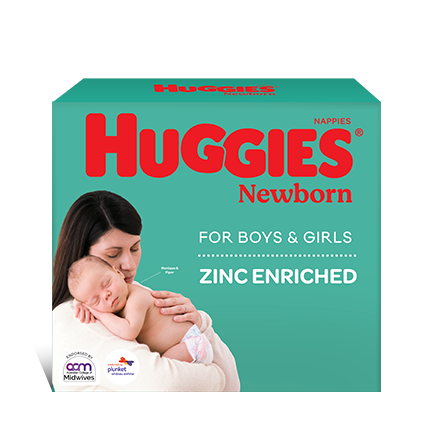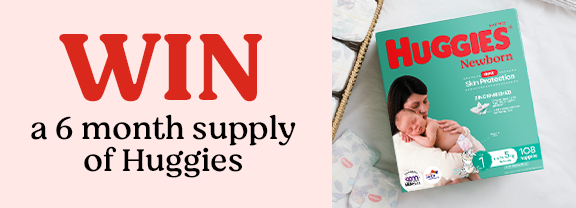The good news you’re having a baby. You’re excited! Then you start to worry. Will I be a good parent? Will I know what to do? And then comes the big one – how will we afford it? It’s true that babies cost money. But it’s also true that they don’t need to cost as much as baby product manufacturers would have us believe. It’s possible to have a baby on a budget – it’s just a matter of thinking outside the catalogue.
1. The birth
While giving birth to your baby with a private obstetrician in attendance, in a private hospital, might cost you up to $20,000, choosing a public hospital, attended by a midwife or the obstetrician on duty is a much more budget-friendly option. You won’t pay for labour or birth care, nor for your accommodation. You might find yourself out of pocket for some GP visits, pathology tests, ultrasound procedures or antenatal classes, but expenses are small by comparison with other models of care.
2. The books
In the olden days, theories and practices of babycare were passed down from generation to generation. Now that we’re having our babies later and our families tend to be more far-flung, most mums-to-be rely on a book. Or 3000. While it’s possible to spend several hundred dollars on Baby Bibles, you don’t need them all.
If you’re on a budget, head to your local library and borrow a selection. If you really like one, buy that one. Or ask around – there’s bound to be a friend of a friend with a library of books they’re just about ready to offload. Most family bookshelves seem to have copies of What to Expect When You’re Expecting by Heidi Murkoff, Arlene Eisenberg and Sandee Hathaway, Baby Love by Robin Barker, and Up The Duff by Kaz Cooke. There’s good reason for that.
Join Huggies Book Club and you’ll not only receive 10 per cent off the RRP of your books, but they’ll be delivered free to your door, saving you time and money. And, of course, one of the best sources of up-to-date parenting info is right here on Huggies.com.au ? and it’s completely free!
3. The equipment
It’s true that babies seem to require a lot of stuff. When you begin to set up a nursery, it can seem overwhelming – and expensive. Chances are, though, that you’re being offered a lot of things you don’t need. Essentials include somewhere safe for your baby to sleep (bassinette or cot), some quality wraps for keeping your baby snug, a safety capsule for your car (an essential for leaving the hospital!), a pram or baby carrier to make getting around easier. A purpose-built change table can be a huge bonus, simply because you spend a lot of time bent over little bottoms in the first few months. But the nursery decals, expensive baby bags, portable bottle warmers and other paraphernalia? Wait to see if you really need them.
It’s also a good idea to make sure that what you’re buying fits in your baby’s nursery! The Huggies baby room decorator allows you to move furniture around at the touch of a button, see how your colour schemes might look, and pick out some essential accessories.
4. The clothes
Most mums find shopping for a new baby even more fun than shopping for themselves. So many cute things to buy! But, just as with shopping for yourself, baby clothes can be divided into basics and “fashion” – and babies mostly need basics. It’s true that small babies can require three or four changes of clothes a day due to “accidents”, so you do need a good supply of singles, all-in-one suits, cotton separates, and tiny socks. But you don’t need to spend a lot of money to get them. Once again, ask family and friends. Children grow so fast that every mum has a stash of cast-off clothes in smaller sizes hanging around the house – and she’s usually keen to offload them. Ebay is another great source of second-hand clothing items – you can often buy bulk lots of baby clothes in various sizes at budget prices. Yes, it’s good to have one or two “nice” outfits for your baby to wear – but for the most part he or she will be just as happy in hand-me-downs.
5. The food
The World Health Organisation recommends that babies are breast fed exclusively for the first six months of their lives. While the choice to breastfeed is a personal one, and is not easy for all mothers, on a purely budget-friendly basis breast is also best. Newborn babies feed every three or four hours. That’s six or seven feeds a day. With formula costing around $20-25 per 900g tin, and each tin anecdotally lasting around a week, you’ll be spending around $100 a month. Of course, that doesn’t take into consideration the upfront cost of bottles, teats, and sterilisers.
The best tip for having a baby on a budget is to do your research. Put some time into finding out what you really need – and what you don’t – and you’ll find your dollar stretches much further.
Last Published* May, 2024
*Please note that the published date may not be the same as the date that the content was created and that information above may have changed since.























